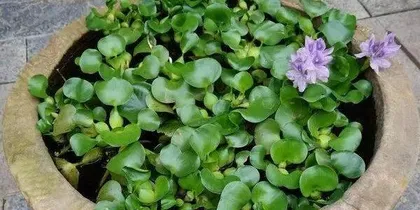With the increasing demand for green plants, more and more people are beginning to pay attention to the water hyacinth. However, not everyone is aware of the toxicity of water hyacinth and the precautions for indoor care. This article will provide a detailed introduction to these issues.

I. Toxicity of Water Hyacinth
Water hyacinth is a toxic plant. If the human body comes into direct contact with the sap of water hyacinth, it can easily cause allergic reactions such as skin itching and redness. Gloves should be worn when handling water hyacinth.
II. Morphological Characteristics of Water Hyacinth
The morphological characteristics of water hyacinth are its oval-shaped leaves, long petioles that hang over the water surface. The rhizome and mycelium of water hyacinth spread quickly and can easily fill the entire body of water.

III. Growth Environment of Water Hyacinth
Water hyacinth is an aquatic plant that is suitable for growing in aquatic environments such as lakes, reservoirs, and ponds.
IV. Care Conditions for Water Hyacinth
The indoor care conditions for water hyacinth are relatively demanding. It requires sufficient sunlight and ventilation, while also controlling the water temperature and pH value. It is also necessary to change the water quality promptly during maintenance.
V. Pollution Resistance of Water Hyacinth
Water hyacinth has a strong ability to control pollution, as it can absorb harmful substances in the water and purify it.

VI. Reproduction of Water Hyacinth
Water hyacinth mainly reproduces through rhizome tillering. During its growth period, water hyacinth will continuously expand around, forming large areas.
VII. Ornamental Value of Water Hyacinth
Water hyacinth has high ornamental value in its natural environment, allowing people to feel the beauty and wonder of nature. At the same time, when kept indoors, it can also become a fresh and natural decorative item.
VIII. Breeding Taboos for Water Hyacinth
When caring for water hyacinth indoors, it is important not to over-fertilize or over-water, as this can easily lead to reverse growth, root rot, and other problems. At the same time, direct contact with the sap should be avoided to prevent physical discomfort.
IX. Maintenance Tips for Water Hyacinth
When maintaining water hyacinth indoors, you can keep it growing healthily by adjusting the water's pH value and changing the water quality. At the same time, it is also necessary to trim the leaves and rhizomes promptly to maintain the beautiful shape of the water hyacinth.
X. Disease Prevention for Water Hyacinth
When maintaining water hyacinth indoors, problems such as root rot and yellowing leaves are often encountered. These can be prevented and treated by increasing ventilation and adjusting the water temperature and pH value.
XI. Combination with Other Plants
When placing water hyacinth indoors, it can be combined with other plants. For example, combining it with hanging plants like spider plants can play a role in beautifying the space.
XII. Collection Value of Water Hyacinth
Because water hyacinth is a toxic plant, it is even listed as a prohibited item for transport in some regions. Water hyacinth also has a certain collection value.
XIII. Medicinal Value of Water Hyacinth
In traditional Chinese medicine, water hyacinth is used to treat various diseases, such as reducing swelling, killing insects, and repelling snakes.
XIV. Development Prospects of Water Hyacinth
As people's awareness of environmental protection and green living continues to increase, water hyacinth, as a plant with pollution control capabilities, has very broad development prospects.
XV.
As a unique aquatic plant, water hyacinth requires attention to its toxicity and care details when kept indoors. At the same time, it has characteristics such as good ornamental value, pollution control ability, and medicinal value, and its future development prospects are very broad.